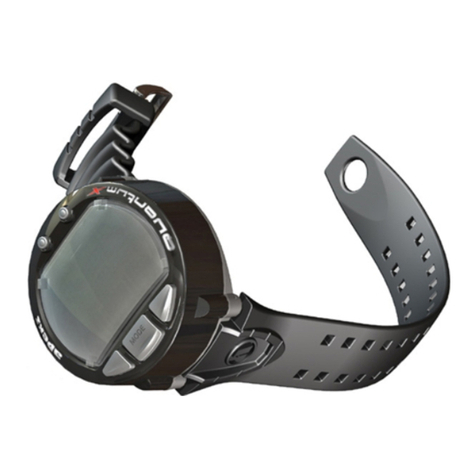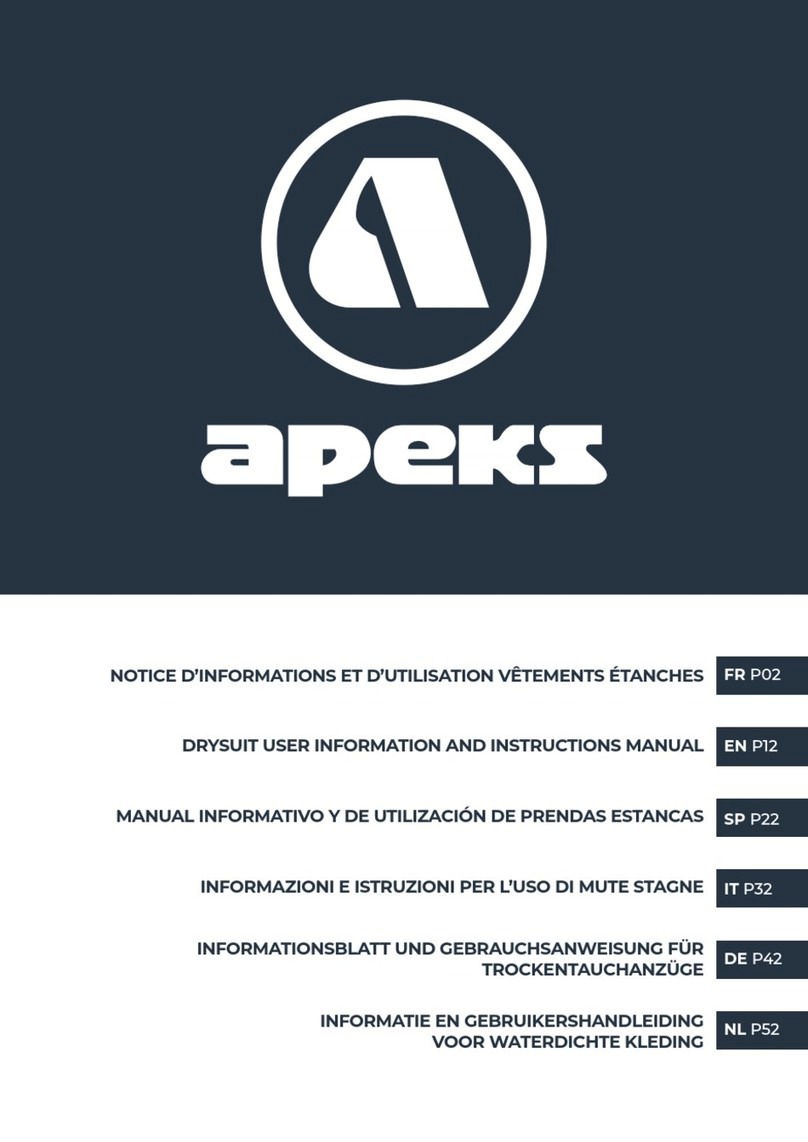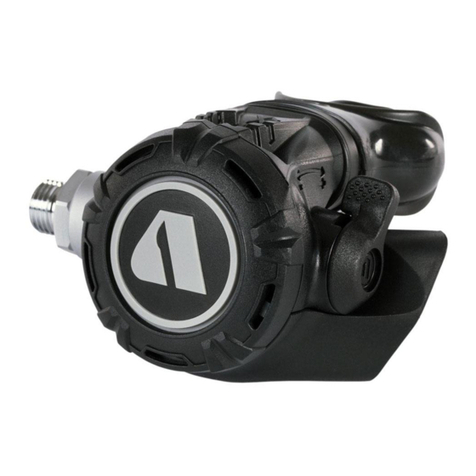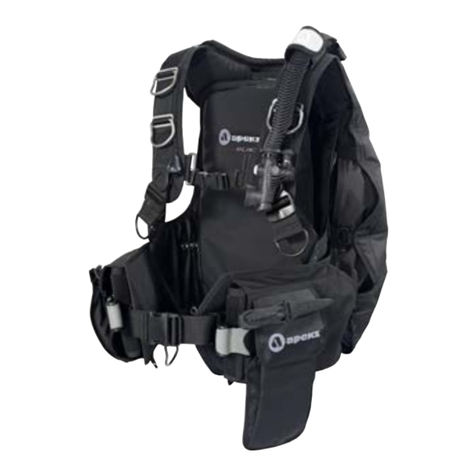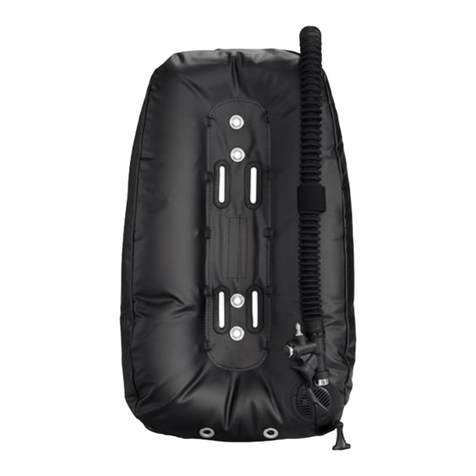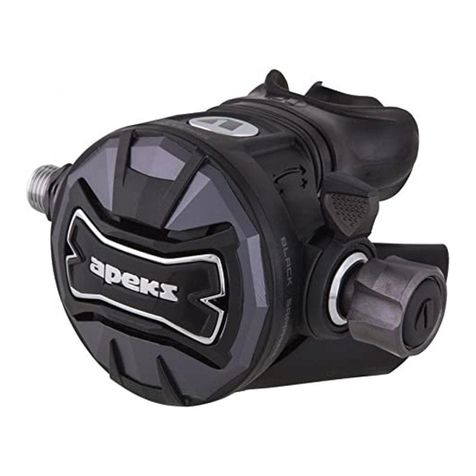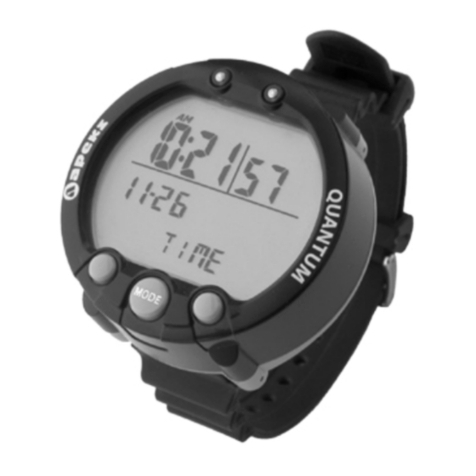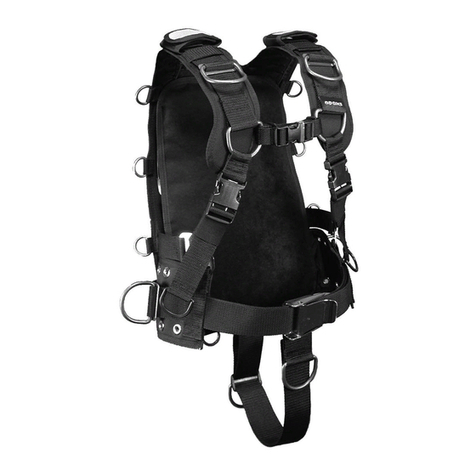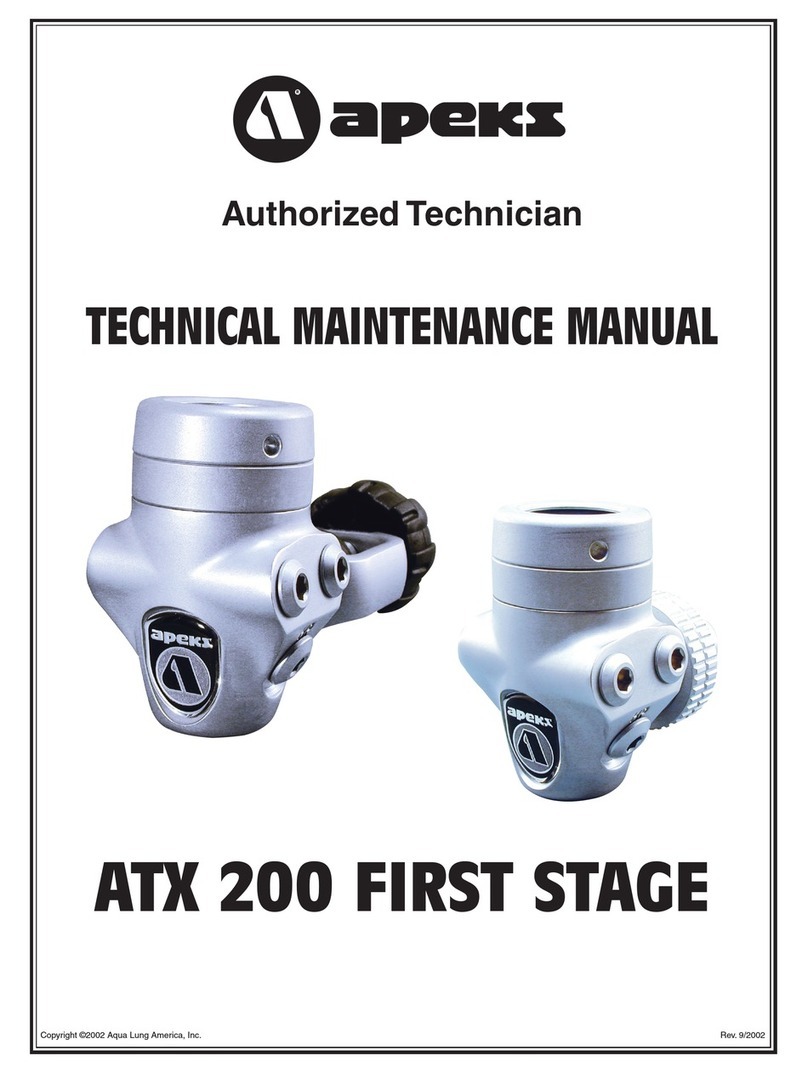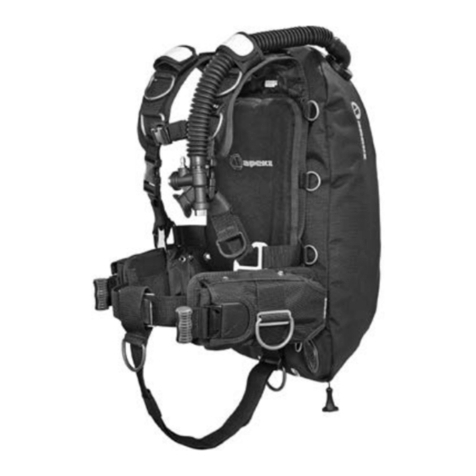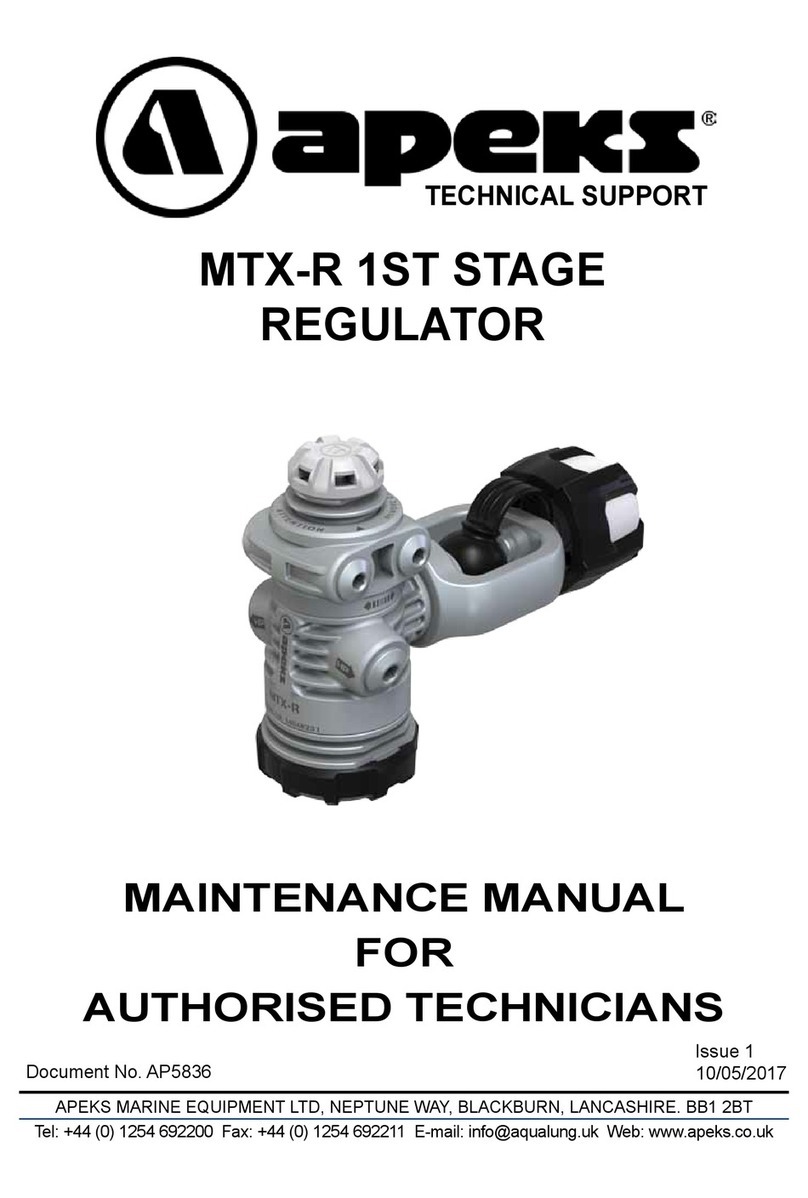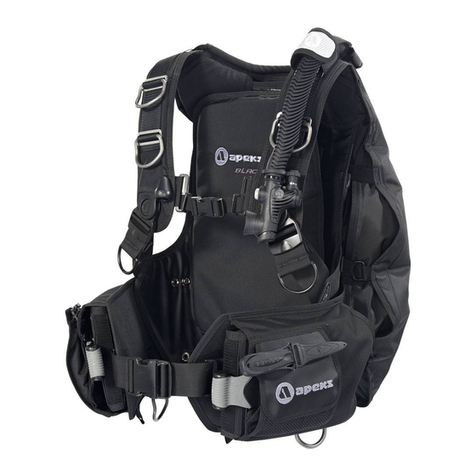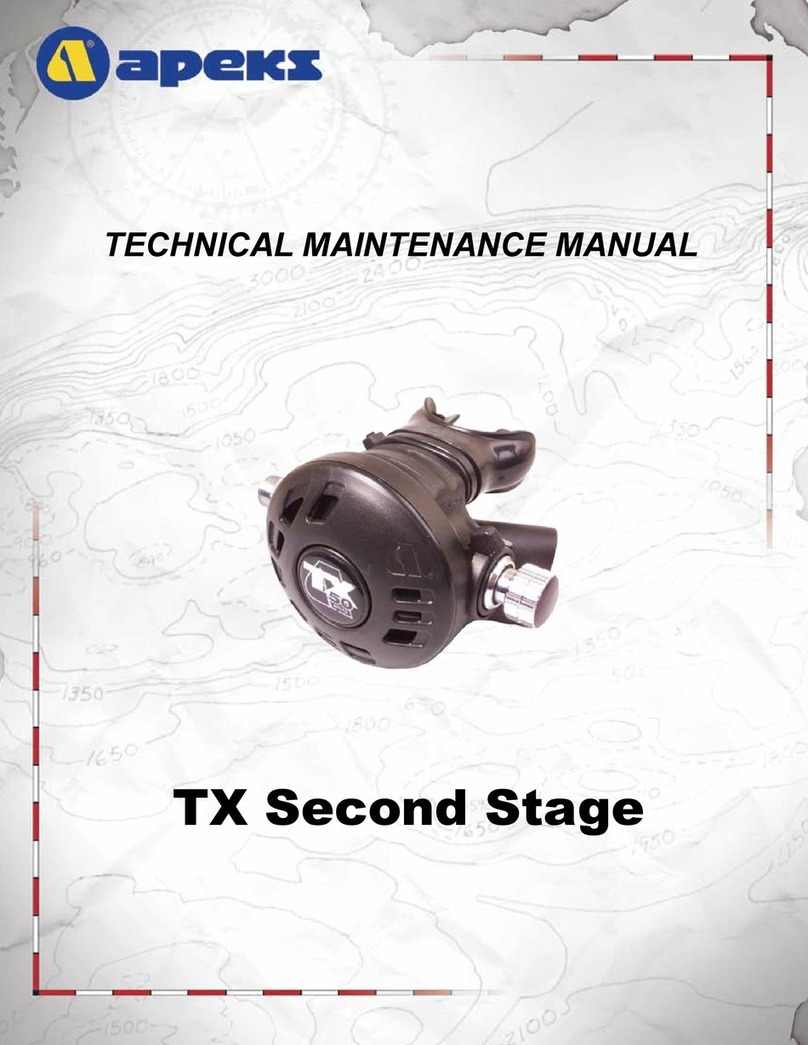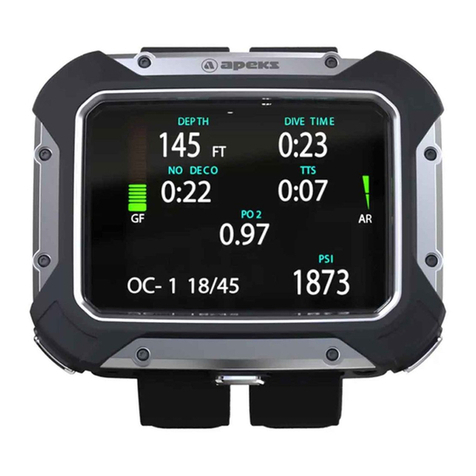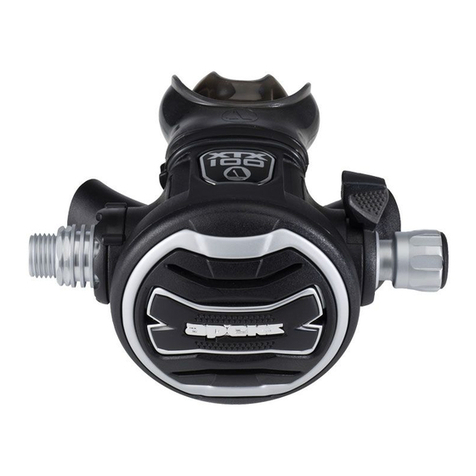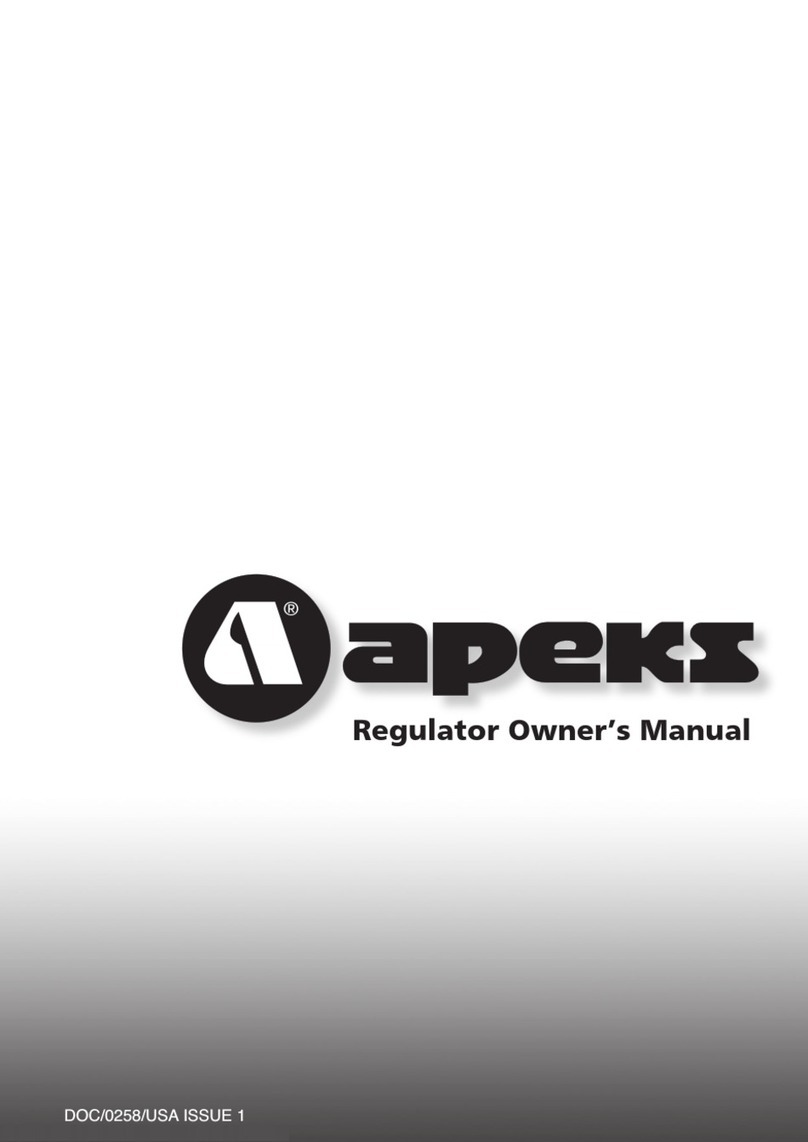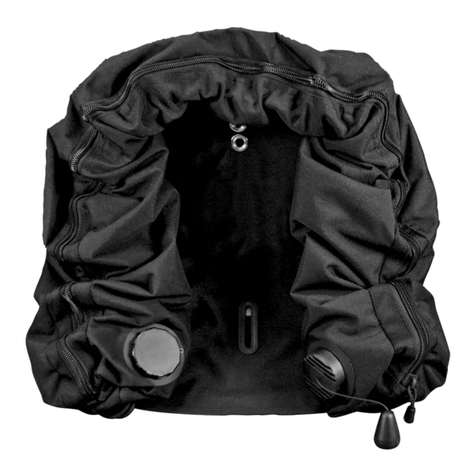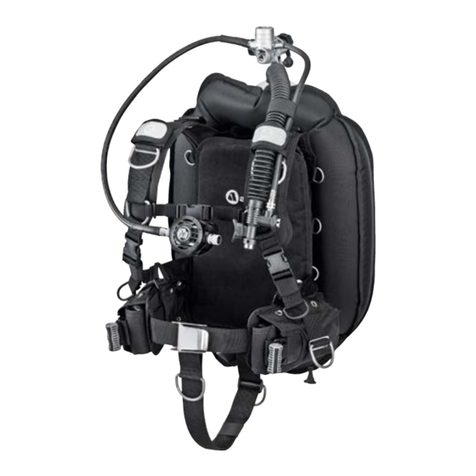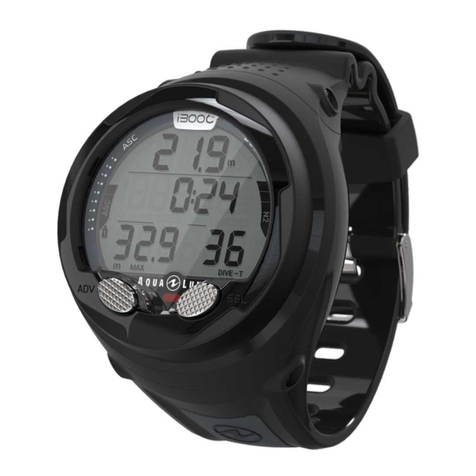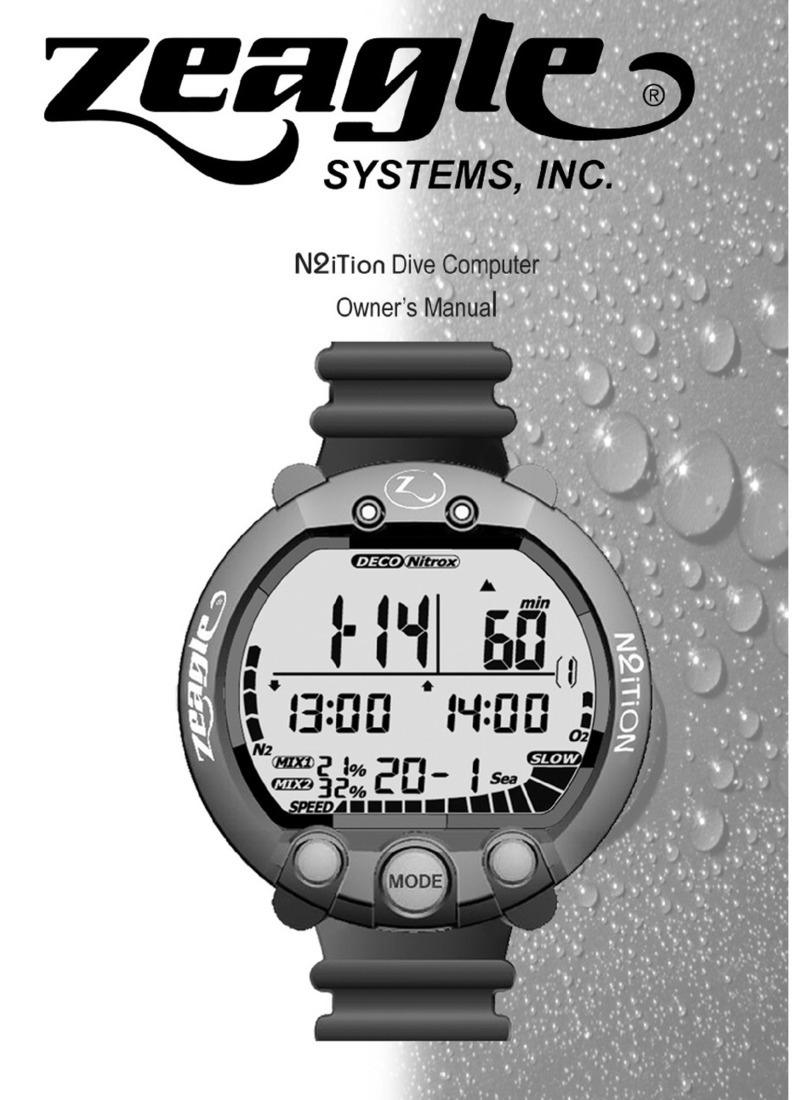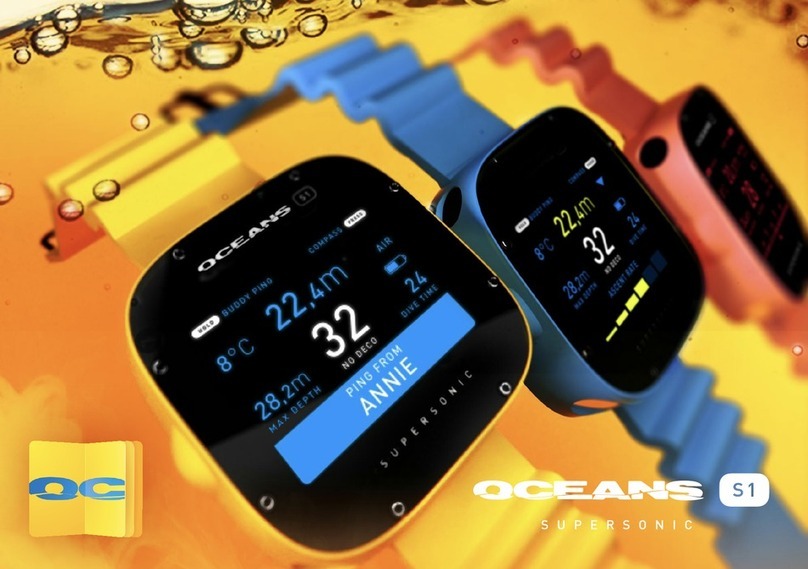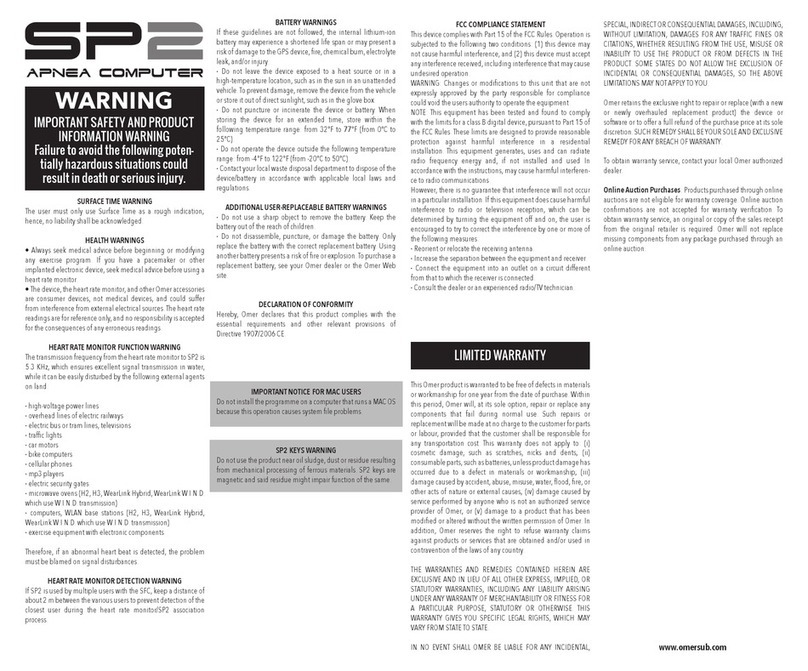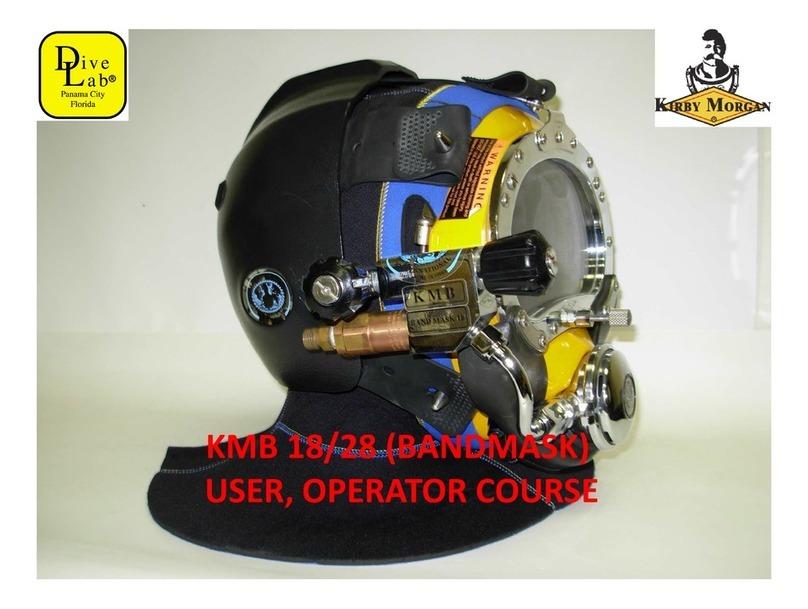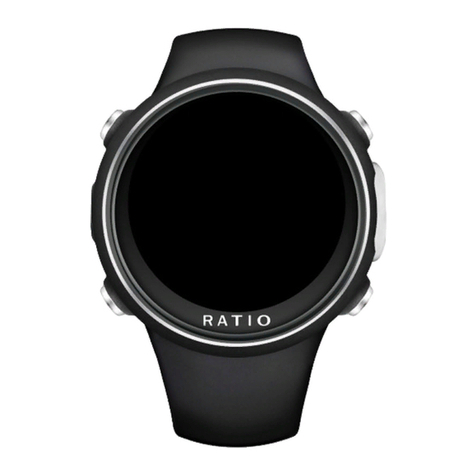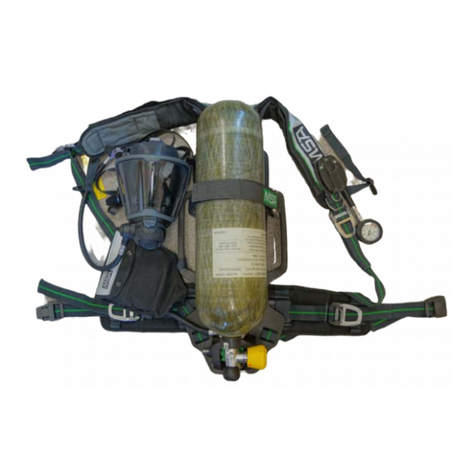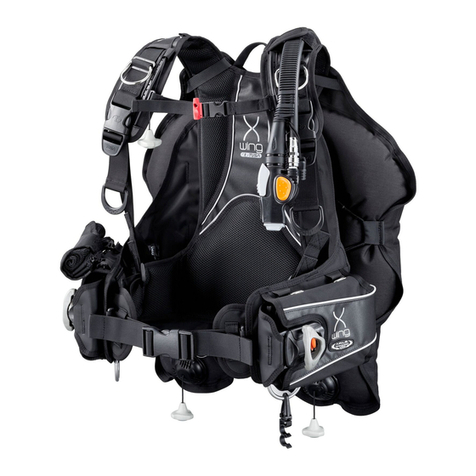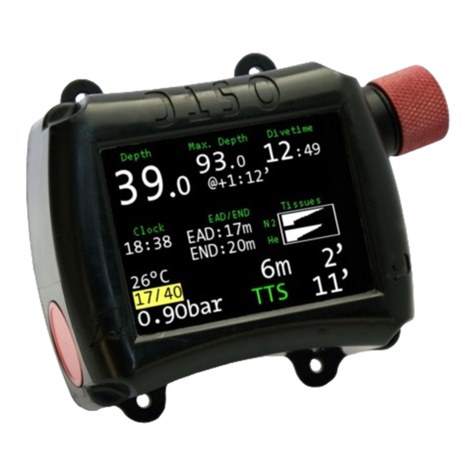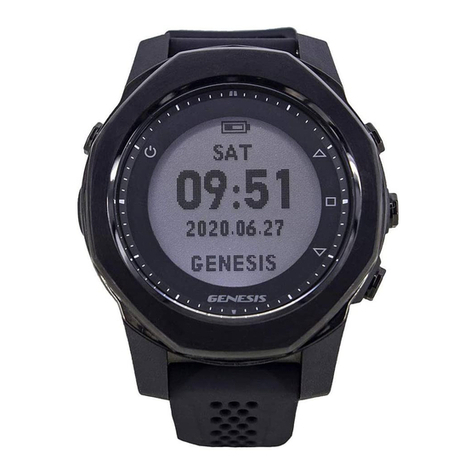
WARNINGS, CAUTIONS, & NOTES
Pay special attention to information provided in warnings, cautions and
notes that are accompanied by one of these symbols:
SCHEDULED SERVICE
It is recommended that the Inator and Over-Pressure valves should be
rinsed in fresh water after each use, and should be disassembled and
serviced annually.
However, if at all unsure about the correct functioning of the
Inator, then it must be inspected immediately.
WARNINGS indicate a procedure or situation that may result in
serious injury or death if instructions are not followed correctly.
CAUTIONS indicate any situation or technique that will result in
potential damage to the product, or render the product unsafe
if instructions are not followed correctly.
NOTES are used to emphasize important points, tips and reminders.
An Ofcial Inspection consists of:
1. Check that all parts are assembled correctly and that no parts are loose.
2. Inspect for signs of corrosion, cracks, damage to sealing surfaces and
check the general condition of the ination assemblies.
3. Inspect ribbed hose for holes or tears and conrm that it is securely
clamped on both ends.
4. Follow FINAL TESTING instructions located in this manual.
If a inator fails any of the 4 steps it should be fully serviced.
Pinch Method
Press upwards on sides of o-ring to
create a protrusion. Grab o-ring or
insert o-ring tool at protrusion.
COPYRIGHT NOTICE
This manual is copyrighted, all rights reserved. It may not, in whole or in
part, be copied, photocopied, reproduced, translated or reduced to any
electronic medium or machine-readable form without prior consent in
writing from Aqua Lung International. It may not be distributed through the
internet or computer bulletin board systems without prior consent in writing
from Aqua Lung International.
©2017 Aqua Lung America, Inc.
WTX InatorTechnical Maintenance Manual
INTRODUCTION
This manual provides factory prescribed procedures for the correct service
and repair of the Aqua Lung or Apeks products described in this manual. It is
not intended to be used as an instructional manual for untrained personnel.
The procedures outlined within this manual are to be performed only by
personnel who have received Factory Authorized training through an
Aqua Lung or Apeks Service & Repair Seminar. If you do not completely
understand all of the procedures outlined in this manual, contact Aqua Lung
to speak directly with a Technical Advisor before proceeding any further.
GENERAL GUIDELINES
1. In order to correctly perform the procedures outlined in this manual, it
is important to follow each step exactly in the order given. Read over the
entire manual to become familiar with all procedures before attempting to
disassemble the product in this manual, and to learn which specialty tools
and replacement parts will be required. Keep the manual open beside you
for reference while performing each procedure. Do not rely on memory.
2. All service and repair should be carried out in a work area
specically set up and equipped for the task. Adequate lighting, cleanliness,
and easy access to all required tools are essential for an efcient repair facilit y.
3. As the product is disassembled, reusable components should be seg-
regated and not allowed to intermix with nonreusable parts or parts from
other units. Delicate parts, which contain critical sealing surfaces, must
be protected and isolated from other parts to prevent damage during the
cleaning procedure.
4. Use only genuine Aqua Lung or Apeks parts for the service of this product.
DO NOT attempt to substitute an original part with another manufacturer’s,
regardless of any similarity in shape or size.
5. Do not attempt to reuse mandatory replacement parts under any circum-
stances, regardless of the amount of use the product has received since it
was manufactured or last serviced.
6. When reassembling, it is important to follow every torque
specication prescribed in this manual, using a calibrated torque wrench.
Most parts are made of either marine brass or plastic, and can be perma-
nently damaged by undue stress.
7. In order to make the product compatible with nitrox up to 40%
O2 (EAN40), the product must be properly cleaned, lubricated
and assembled using genuine Aqua Lung or Apeks replace-
ment parts. In addition, assembly must be carried out in a clean
environment using powderless, latex gloves or equivalent. For more detailed
information, be sure to read Procedure A: Cleaning and Lubricating.
GENERAL CONVENTIONS
Unless otherwise instructed, the following terminology and techniques
are assumed:
1. When instructed to remove, unscrew, or loosen a threaded part, turn
the part counter-clockwise.
2. When instructed to install, screw in, or tighten a threaded part, turn
the part clockwise.
3. When instructed to remove an o-ring, use the pinch method
(see illustration below) if possible, or use a brass or plastic o-ring removal
tool. Avoid using hardened steel picks, as they may damage the o-ring
sealing surface. All o-rings that are removed are discarded and replaced
with brand new o-rings.
4. The following acronyms are used throughout the manual: MP is Medium
Pressure; HP is High Pressure; LP is Low Pressure.
5. Numbers in parentheses reference the key numbers on the
exploded parts schematics. For example, in the statement,
“...remove the o-ring (7) from the crown (8)...”, the number 7 is
the key number to the crown o-ring.
4
